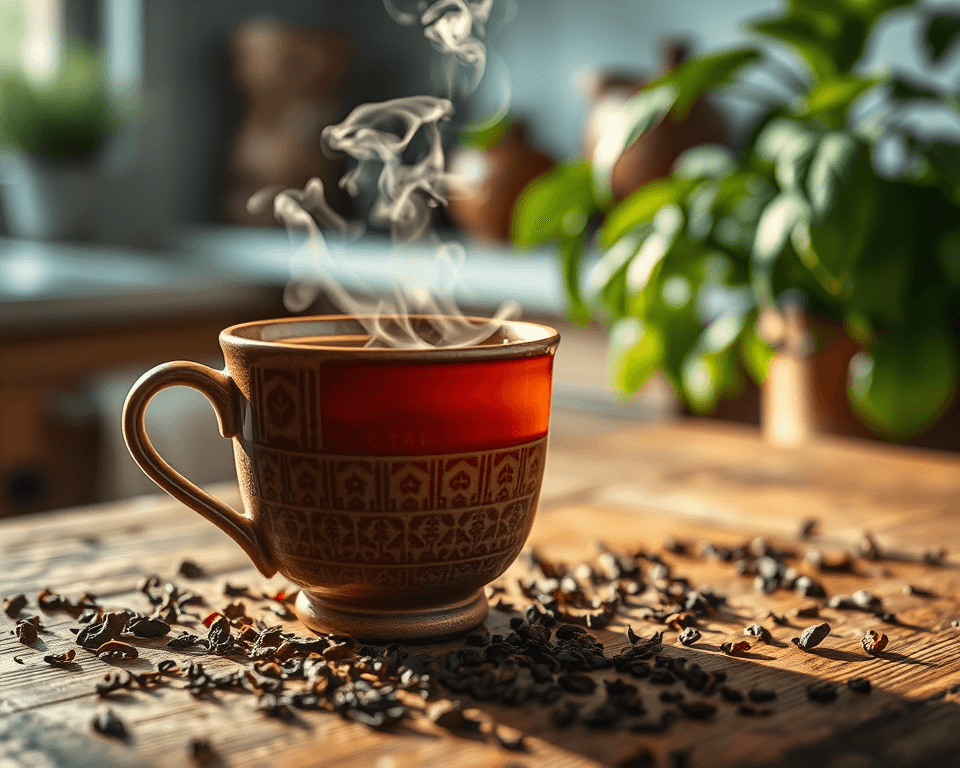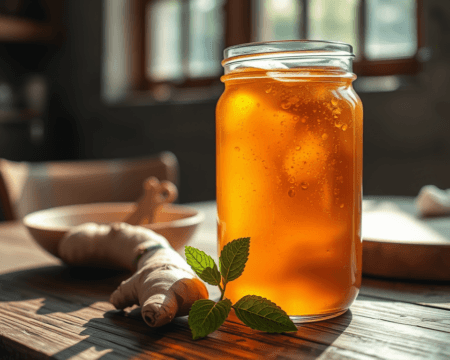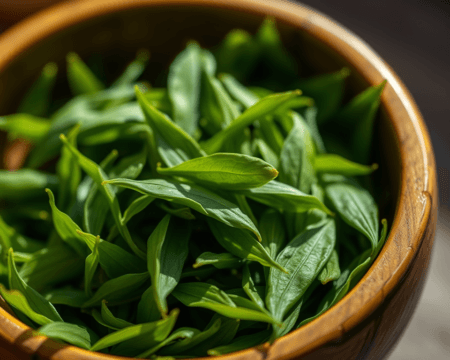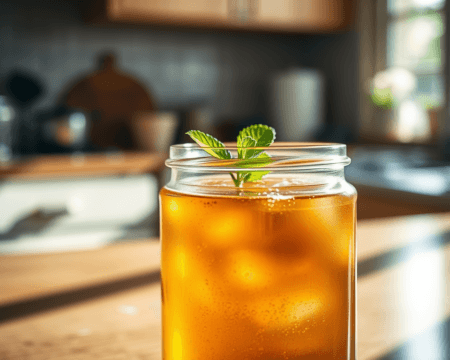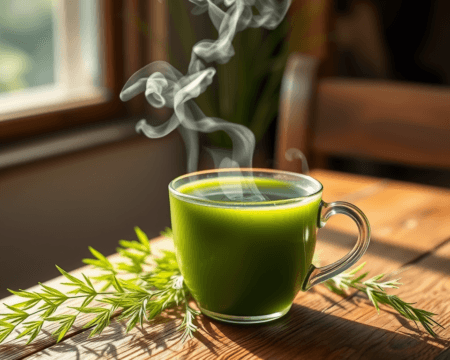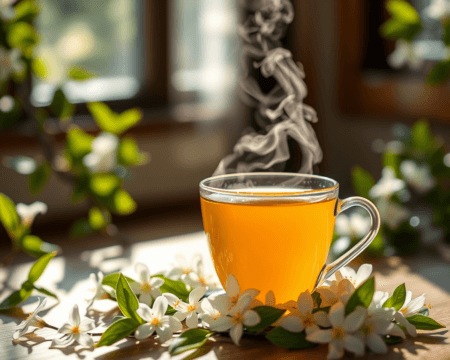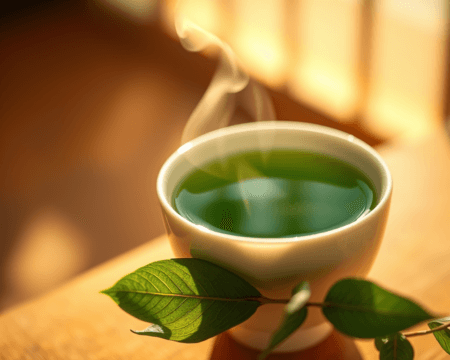You ever grab a cup of tea and instantly feel like you hit the reset button? Yeah, I know that feeling. But not all teas are created equal. If you’re into really bold flavors that smack you right in the taste buds, then let’s get into the world of CTC tea. This isn’t just your boring old steep-and-sip — CTC tea brings a whole new vibe to the tea scene. Strap in, because I’m going to lay it all out, from the unique brewing techniques to how this tea’s got a sweet spot in cultures around the world.
Key Takeaways
- CTC tea, or Crush, Tear, Curl tea, is all about bold flavors and quick brewing, thanks to its unique processing method.
- It comes in various varieties, each with distinct flavor profiles, making it perfect for the adventurous tea drinker.
- Brewing CTC tea requires a little finesse, especially around steeping time and water temperature, to maximize its rich flavor.
- CTC tea holds a significant cultural spot in many regions and boasts potential health benefits, alongside some things to keep in mind.
What is CTC Tea?
CTC stands for Crush, Tear, Curl, and it’s not just a fancy name. This method transforms regular tea leaves into tiny pellets that pack a punch. Think of it like this: you’re not just brewing tea; you’re brewing flavor. The CTC process grinds and breaks down tea leaves into small, consistent shapes, which improves the infusion quality and preserves the strength. Unlike traditional whole leaf teas, which might take a while to release their character, CTC tea aims for quick extraction. You want rich, full-bodied flavor? This is your tea.
The CTC Process Explained
Tea leaves undergo a mechanical manipulation process that begins with crushing them. This is followed by tearing and curling, leading to those little nuggets of joy. The result? A consistent product that extracts flavor quickly. What isolates CTC from other methods is how it maximizes surface area, ensuring each sip delivers a powerful taste explosion. I mean, who wouldn’t want to be met with robust tannins and a hearty base in every cup?
Characteristics of CTC Tea
What are we talking about when we say bold? Well, CTC tea has a unique flavor profile that translates into a strong, malty taste and an aroma that could make even the worst day seem a bit better. The texture, how it feels in your mouth, is another point in its favor. It’s oaky and sometimes even a tad astringent, which makes the infusion experience rich and rewarding. The color? Dark, almost chocolatey, pulling you in with every glance at that cup. This is the kind of tea that commands your attention from the moment you steep it.
Types and Flavors of CTC Tea
Now that you know what CTC tea is, let’s break down the varieties that dance around in this category. You’ve got Assam CTC, known for its strong malty notes, which pair perfectly with breakfast. Then there’s the Kenyan CTC, which has a slightly fruity undertone, giving it an edge of sophistication. And let’s not forget about Darjeeling CTC, which manages to infuse some floral hints into the mix. Each type brings its own flair, thanks to the geographical influences that shape its growth.
Popular Varieties of CTC Tea
When looking at popular varieties, you’ll notice that tea often reflects its region. Assam tea is like the bold brother, robust and perfect for a kickstart in the morning, while Kenyan tea serves a vibrant, fruity kick ideal for afternoon sipping. Then, Darjeeling tea wraps up the lineup with its exquisite, delicate flavors. On some days, a blend of these varieties might just be what you’re after, tapping into the richness each type has to offer.
Flavor Profiles and Tasting Notes
Talking flavor here, you’ll find CTC tea goes off the charts. Expect a bitter edge balanced with malty sweet stretching into beautifully floral notes. If you take your time, you might even pick up on the fruity undertones that elevate the drink to another level. The palate experience is a journey through deep flavors, satisfying each craving for something rich and fulfilling. Be ready; you’re signing up for an adventure.
Brewing CTC Tea: Techniques and Tips
Alright, let’s get to the nitty-gritty of how to brew this delightful tea. You can’t pour hot water on a bag and expect magic; it requires a little more finesse, but don’t worry, I’ve got your back.
Ideal Brewing Methods for CTC Tea
Want to maximize that bold flavor? Start with the right brewing equipment. Use a good-quality tea infuser or even a tea pot — vintage or modern, whatever floats your boat. The steeping time is key here; typically, sticking around the 3 to 5-minute mark will yield the best results. The water temperature should sizzle at around 200°F — nearly boiling. This is essential to thoroughly extract all those rich notes and aromatic properties that CTC tea is known for.
Tips for the Perfect Cup of CTC Tea
For the right brew, focus on your water-to-tea ratio. A good starting point is 1 teaspoon of tea for every 8 ounces of water, but don’t be afraid to tweak it based on personal preferences. Want it stronger? Increase the ratio. Want it lighter? Dial it back. Temperature control is where many slip up, so keep an eye on that kettle.
CTC Tea’s Popularity Across Regions
CTC tea isn’t just a drink; it’s woven deeply into social fabric across different cultures. The way it’s consumed and celebrated speaks volumes about its significance.
Cultural Significance of CTC Tea
In many regions, especially in India, CTC tea plays an essential role in daily life. From the morning chai to evening gatherings, it’s a social thread that binds communities. Tea ceremonies vary widely but often serve as an avenue for storytelling, bonding, and celebrating moments, both big and small. Seriously, tailgate vibes with friends while enjoying a cup of CTC tea? That’s living.
CTC Tea in Global Markets
Ever wonder why CTC tea is so popular around the globe? It’s simple: the demand is massive. Countries like India, Kenya, and Sri Lanka dominate the export markets, and consumer preferences shift regularly due to rising health awareness and flavor exploration. More people are realizing that CTC tea isn’t just a drink; it’s an experience. Understanding trends in tea consumption can sometimes be a game-changer for businesses looking to tap into this lucrative market or for individuals wanting to expand their collection.
Health Benefits and Drawbacks of CTC Tea
Just when you think tea’s only about taste, let’s look into the health angle.
Potential Health Benefits
First off, CTC tea is packed with antioxidants, perfect for boosting your health without sacrificing flavor. These little warriors fight off free radicals, potentially lowering risk factors for various diseases. If you’re looking into heart health, studies suggest that regular consumption may help lower blood pressure. And let’s not forget, it packs a caffeine punch that can help keep you mental alertness on point.
Possible Health Concerns
But hey, life isn’t all sunshine and rainbows. There are some things to consider. CTC tea can be higher in caffeine, which isn’t great for everyone, especially if you’re sensitive. Acidity could lead to digestive discomfort, and let’s not forget about staining your teeth over time. Moderation is key here, folks. Listen to your body; it knows best.
CTC tea might seem straightforward, but it’s so much more than just leaves steeped in water. It’s a mosaic of flavor, culture, health benefits, and traditions waiting to be explored. Whether you’re a seasoned tea drinker or just dipping your toes into the world of brews, CTC tea has something powerful and exhilarating to offer. Grab your kettle and get brewing!
Frequently Asked Questions
What exactly is CTC tea?
CTC tea, or Crush, Tear, Curl tea, is a specific method of processing tea leaves that results in small, uniform granules. This process enhances the tea’s flavor extraction, making it brew quickly and creating robust flavors often favored in many tea cultures.
How should I brew CTC tea for the best flavor?
To brew CTC tea effectively, use freshly boiled water set at around 90-95°C (194-203°F). Steep the tea for about 3 to 5 minutes, adjusting the time to your taste preference. Shorter steeping will yield a milder flavor, while longer steeping brings out bolder notes.
What types of CTC tea are available?
CTC tea comes in various types, including Assam, Darjeeling, and Nilgiri, each offering unique flavor profiles. Assam has a malty flavor, Darjeeling tends to be more floral and musky, while Nilgiri is known for its brisk, fragrant quality, appealing to different palates.
Are there any health benefits associated with CTC tea?
CTC tea contains antioxidants that may support heart health and improve digestion. It also provides a caffeine boost, which can enhance alertness and concentration. However, moderation is key, as excessive caffeine can lead to adverse effects.
Can I add milk or sugar to CTC tea?
Absolutely! CTC tea is often enjoyed with milk or sugar, especially in regions where spiced chai is popular. Consider adding a splash of milk or a teaspoon of sugar after brewing to enhance the flavor according to your preference.
Is CTC tea suitable for everyone?
While CTC tea is generally safe for most people, those sensitive to caffeine may want to limit their intake. Additionally, individuals with specific health conditions should consult with a healthcare provider before incorporating new teas into their diet.
How does CTC tea compare to other types of tea?
CTC tea is designed for quick brewing and offers a stronger flavor compared to loose-leaf or whole leaf teas. While loose-leaf teas can provide nuanced flavors and aromas, CTC tea’s boldness is ideal for those who enjoy a rich, robust cup quickly.
What should I know about storing CTC tea?
To maintain freshness, store CTC tea in an airtight container in a cool, dry place, away from light and moisture. Proper storage helps preserve its flavor and aroma for a longer period.
Can I reuse CTC tea leaves?
While it’s possible to reuse CTC tea leaves, the flavor will diminish with each subsequent brew. For the best taste experience, it’s recommended to use fresh leaves for optimal flavor and strength with each cup.




